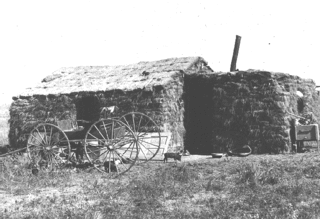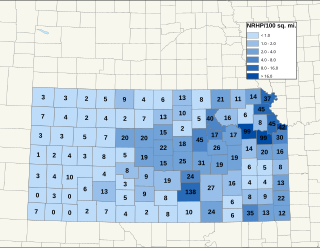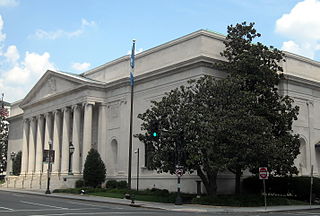This page is based on this
Wikipedia article Text is available under the
CC BY-SA 4.0 license; additional terms may apply.
Images, videos and audio are available under their respective licenses.

The Lecompton Constitution (1857) was one of four proposed constitutions for the state of Kansas. It was drafted by pro-slavery advocates and included provisions to protect slaveholding in the state and to exclude free blacks from its bill of rights. It was overwhelmingly defeated on January 4, 1858 by a majority of voters in the Kansas Territory. The rejection of the Lecompton Constitution, and the subsequent admittance of Kansas to the Union as a free state, highlighted the irregular and fraudulent voting practices that had marked earlier efforts by bushwhackers and border ruffians to create a state constitution in Kansas that allowed slavery.
A memorial hall is a hall built as a memorial, typically to those who have lost their lives in war. Specifically, Memorial Hall may refer to:

The sod house or "soddy" was an often used alternative to the log cabin during frontier settlement of the Great Plains of Canada and the United States. Primarily used at first for animal shelters, corrals and fences, if the prairie lacked standard building materials such as wood or stone, or the poverty of the settlers precluded purchasing standard building materials, sod from thickly-rooted prairie grass was abundant, free, and could be used for house construction. Prairie grass has a much thicker, tougher root structure than a modern lawn.
A type in Alaska is a barabara.

There are over 1,400 buildings, sites, districts, and objects in Kansas listed on the National Register of Historic Places in Kansas. NRHP listings appear in 101 of the state's 105 counties.

Boller Brothers, often written Boller Bros., was an architectural firm based in Kansas City, Missouri which specialized in theater design in the Midwestern United States during the first half of the 20th century. Carl Heinrich Boller (1868–1946) and Robert Otto Boller (1887–1962) are credited with the design of almost 100 classic theaters ranging from small vaudeville venues to grand movie palaces.
Odd Fellows Hall, Independent Order of Odd Fellows Building, IOOF Building, Odd Fellows Lodge and variations are buildings for a chapter of the Independent Order of Odd Fellows fraternal organization.
Anderson Hall may refer to:
Odd Fellows lodge is a lodge of the Odd Fellows fraternity.

Louis Singleton Curtiss, was a Canadian-born American architect. Notable as a pioneer of the curtain wall design, he was once described as "the Frank Lloyd Wright of Kansas City". In his career, he designed more than 200 buildings, though not all were realized. There are approximately 30 examples of his work still extant in Kansas City, Missouri where Curtiss spent his career, including his best known design, the Boley Clothing Company Building. Other notable works can be found throughout the American midwest.
Strong House or Strong Hall may refer to:
John Gideon Haskell was an architect who designed portions of the Kansas State Capitol and other public buildings in the state.
Keene & Simpson was an American architectural firm of partners Arthur Samuel Keene (1875–1966) and Leslie B. Simpson from 1909–1955, after which it became Keene and Simpson and Murphy.

Rose & Peterson was an architectural firm in Kansas City, Kansas. It was a partnership of William Warren Rose (1864–1931) and David Burton Peterson (1875–1937).

Constitution Hall houses the student center at the University of Alaska Fairbanks in Fairbanks, Alaska. Completed in 1955, the building was the site that year of the meeting at which the Alaska State Constitution was drafted, a milestone in the territory's drive for statehood. It is a reinforced concrete structure two stories high. The building currently houses a bookstore, barbershop, alumni association offices, and the studios of the student radio station KSUA.









